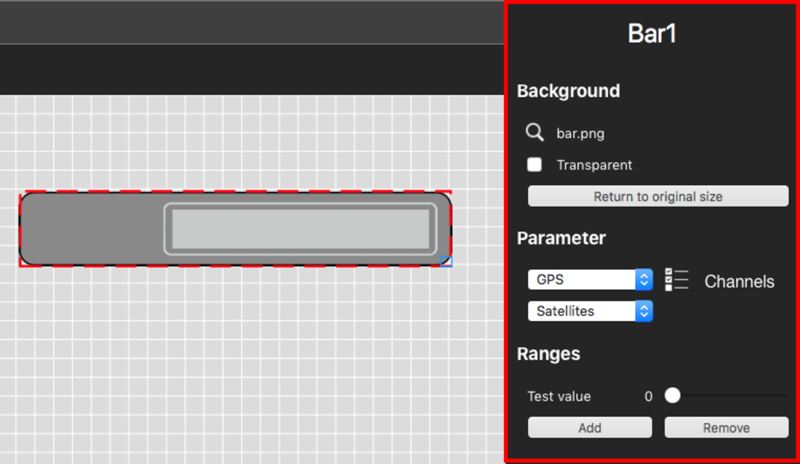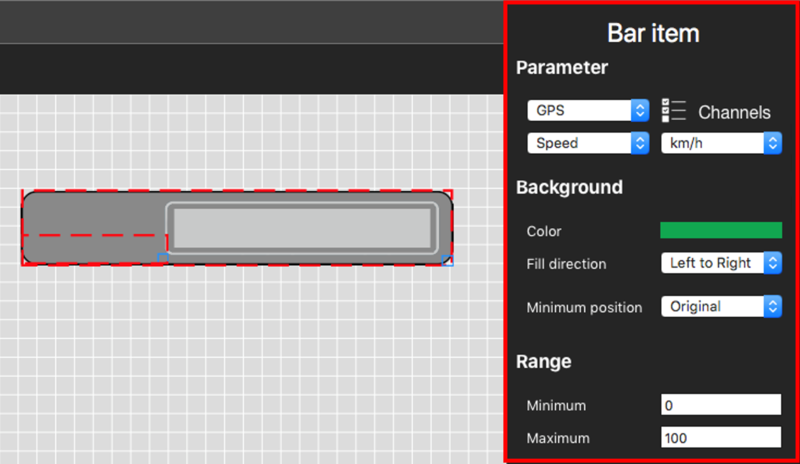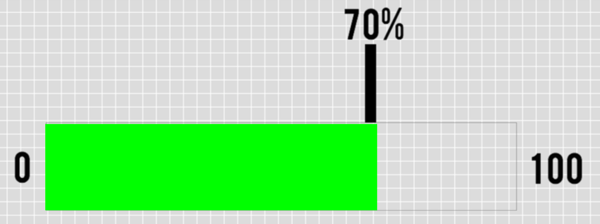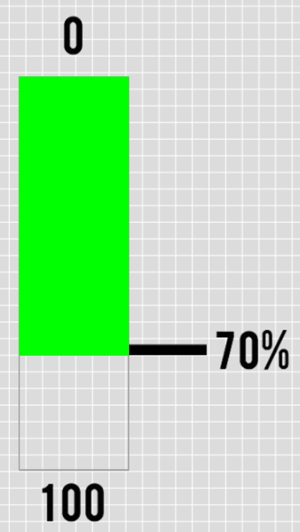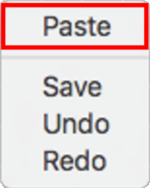HD2 - Bar Graph Element - macOS
VBOX Video HD2 software comes supplied with a library of bar graph elements. The user also has the option to create their own bar graph using a PNG, JPEG or BMP image file.
Adding a supplied bar graph element
Open the bar graph library by clicking the ‘Bar’ icon from the top panel buttons menu.

A bar graph library will then appear in the settings panel to the right. Clicking on a chosen bar graph will load it into the scene. Once a bar graph has been added to the scene, it can be clicked and dragged to the desired location.
Note: Hovering over any of the bar graph thumbnails will cause a larger preview of the bar graph to appear.
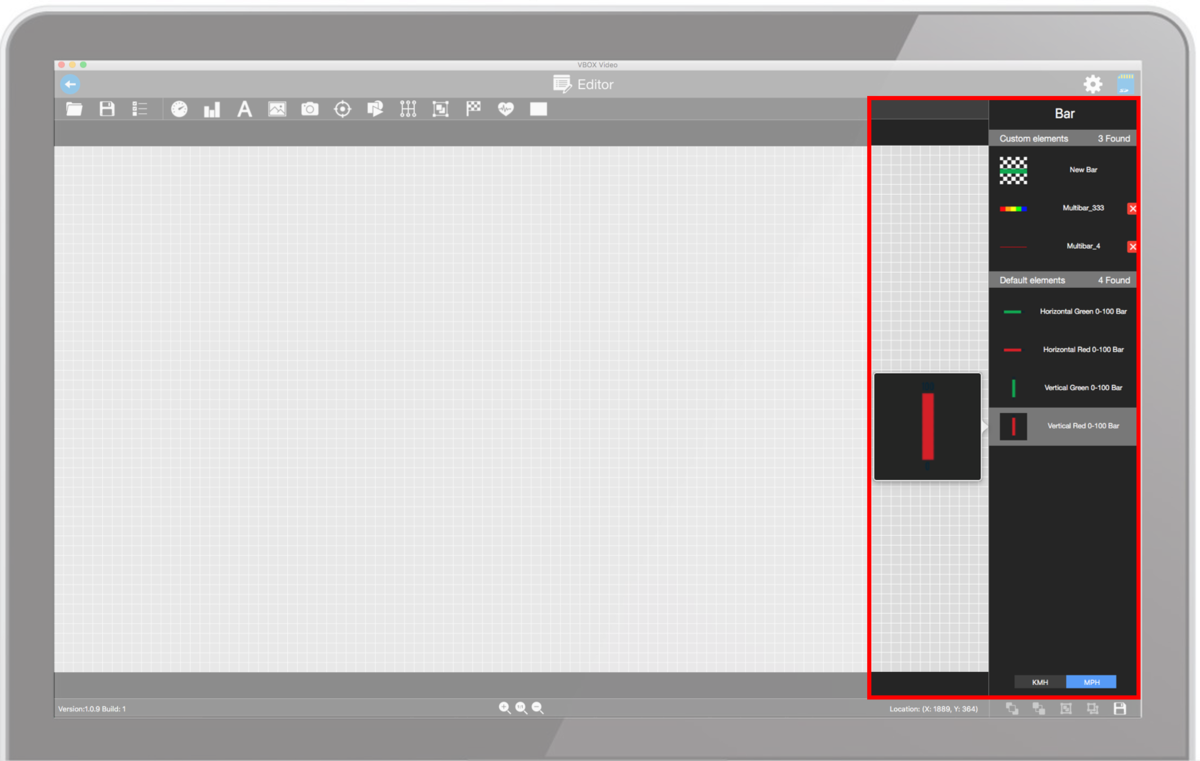
You can toggle between bar graphs using mph or km/h units by using the buttons at the bottom of the library.

Bar graphs within the library will have pre-defined settings. These settings can be changed as shown here.
The bar graph element can be resized using the icon in the bottom right-hand corner.

Creating a new bar graph
When creating a new bar graph element, an image for the background is required, unless using a transparent background, in which case tick the ‘Transparent’ option. An example image is shown below.
Note: Images can be resized within HD2 software.

Bar graph background image
Open the bar graph library by clicking the ‘Bar’ icon from the top panel buttons menu.

Within the bar graph library, selecting the 'New Bar' option will add a new bar graph element to the scene.

To upload a background image use the search icon ![]() button within the background settings area.
button within the background settings area.
Bar Graph Settings
When a bar graph is selected, its settings are shown in the right-hand panel. The settings presented are dependent on whether the background or the bar fill is selected.
|
Background settings |
Bar fill settings |
Setting the background
If you are creating a new bar graph rather than using one from the range library, or wanting to change the image, the background can be set by clicking on the search icon ![]() when the background is selected.
when the background is selected.

Bar graph backgrounds can be made transparent by ticking the ‘Transparent’ option within the bar graph background area.
Defining a bar graph parameter
When either the bar background or fill is selected, the data set to display on the bar graph can be changed using the two drop-down menus within the 'Parameter' section.
The first drop-down menu defines the source. Select either GPS, CAN or OBD.
Note: CAN and OBD options will only appear if they have been set up by the user.
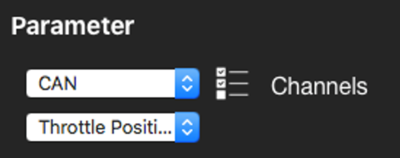
The second drop-down list defines the channel to be shown. In the example above, a CAN input is set to display Throttle pedal data.
Selecting the  button opens up a Channel Settings window where you can configure CAN and OBD channels.
button opens up a Channel Settings window where you can configure CAN and OBD channels.
Changing the units
Within the parameter section, speed, acceleration or distance channels can be set to display in different units.
The options available are:
- Speed – km/h, mph, kts, m/s, ft/s
- Acceleration – g, m/s², ft/s²
- Distance – m, ft, km, mi, nmi
Bar Setup
Set fill area
Move the bar graph fill area to the desired location and re-size it using the icon in the bottom right corner.

Set bar colour
After the bar size and location has been set, choose the colour the bar will fill with. To change the colour, select the existing colour and choose from the colour wheel. The opacity of the colour can also be changed here.
To set a specific RGB value, click on ‘Color sliders’.
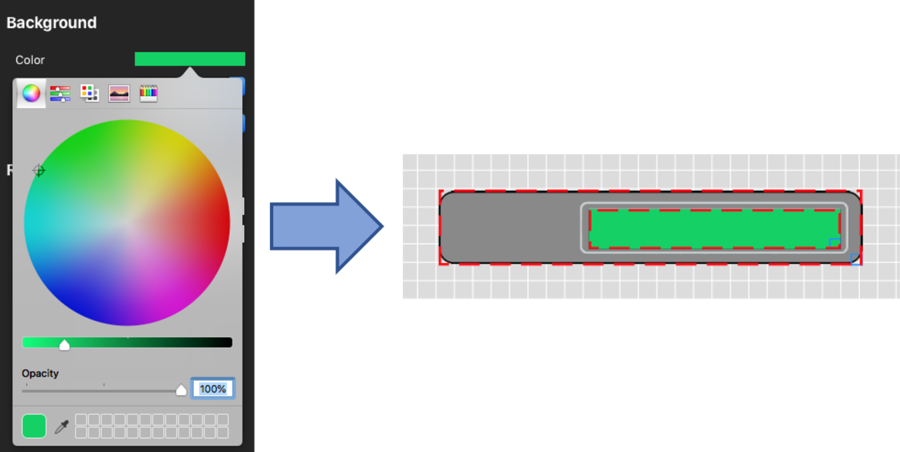
Fill direction
Set the direction in which the bar graph will fill.
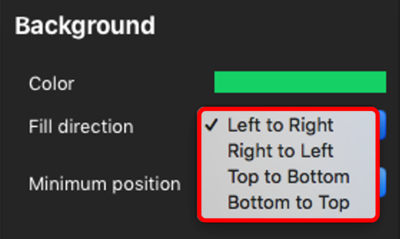
|
Left to Right |
Right to left |
|
Bottom to Top |
Top to Bottom |
Minimum position
The minimum position setting will automatically move depending on fill direction. For most cases, the user will not need to change this.
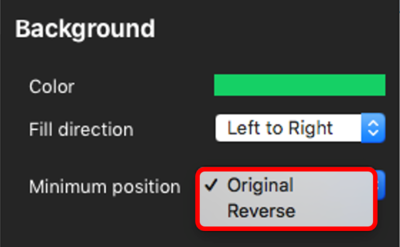
If configuring a bar graph for a negative value, the minimum position may need to be changed.
For example:
|
|
|
As the left hand bar graph is showing negative values, it will need to be set as shown below.

Bar Range
The last step is to define the minimum and maximum values of the bar graph within the fill settings. Use the 'Test Value' box within the background settings to check what will be shown when different values are received.
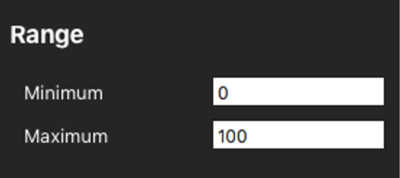
Using multiple bars
Multiple bars can be added into a single bar graph element. When using multiple bars, the process above must be followed for each bar individually.
Additional bars are added into a bar graph element using the ‘Add’ button within the background settings.
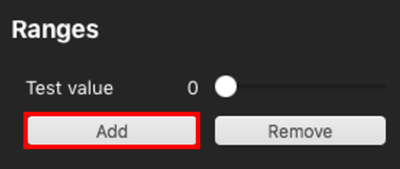
To set up each bar, click on it so it is highlighted. The settings within the right hand panel will apply to the selected bar.

Each bar can have its range, colour and fill direction defined individually.
Note: Only one parameter can be set to a bar graph element.


